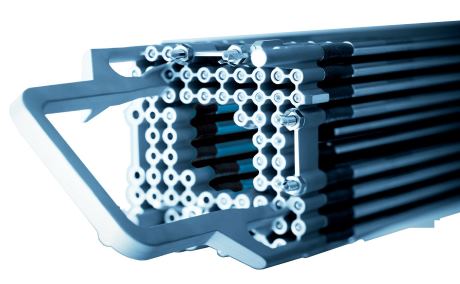GNF launches next-generation fuel
14 May 2015
An earlier version of this story incorrectly implied that NSF is a cladding. The version below gives the correct description of NSF as a channel material that exhibits superior resistance to channel distortion.
Global Nuclear Fuel (GNF) has made its next-generation GNF3 boiling water reactor (BWR) fuel assembly available to customers for the first time.
 |
| Customers can now try GNF3 fuel for themselves (Image: GNF) |
GNF3 has evolved from the company's GNF2 fuel, and according to the company, provides improved fuel economics, increased performance and flexibility in operation.
It utilizes the same 10 x 10 lattice design used in GNF2, and employs GNF's NSF (1.0% niobium-1.0% tin-0.35% iron) zirconium alloy channel material which GNF says significantly reduces fuel channel distortion compared to typical zircaloy based channel materials. The new fuel design exhibits superior resistance to channel distortion, the company said.
GNF Americas chief operator officer, Amir Vexler, said the new fuel had been designed to deliver more power while reducing overall fuel cycle costs. "The enhanced GNF3 design will save utilities money by reducing batch fraction, lowering the average enrichment in fuel reloads and extracting more power from the core," he said.
A total of eight GNF3 lead-use assemblies have already been loaded into two nuclear plants - four each at Entergy's River Bend and Exelon's LaSalle - and are operating as designed, according to GNF. The company has now made the fuel available to customers in lead use assembly quantities, for use in a reactor core to confirm performance prior to using it for a full core. GNF3 is scheduled to be available for full reloads in 2018.
The fuel will be manufactured at Wilmington, North Carolina.
GNF, a GE-led joint venture with Hitachi and Toshiba, manufactures and supplies fuel for BWRs. Earlier this week GE Hitachi Nuclear Energy announced that the company intended to offer refuelling services to pressurized water reactors as well as for BWRs.
Researched and written
by World Nuclear News